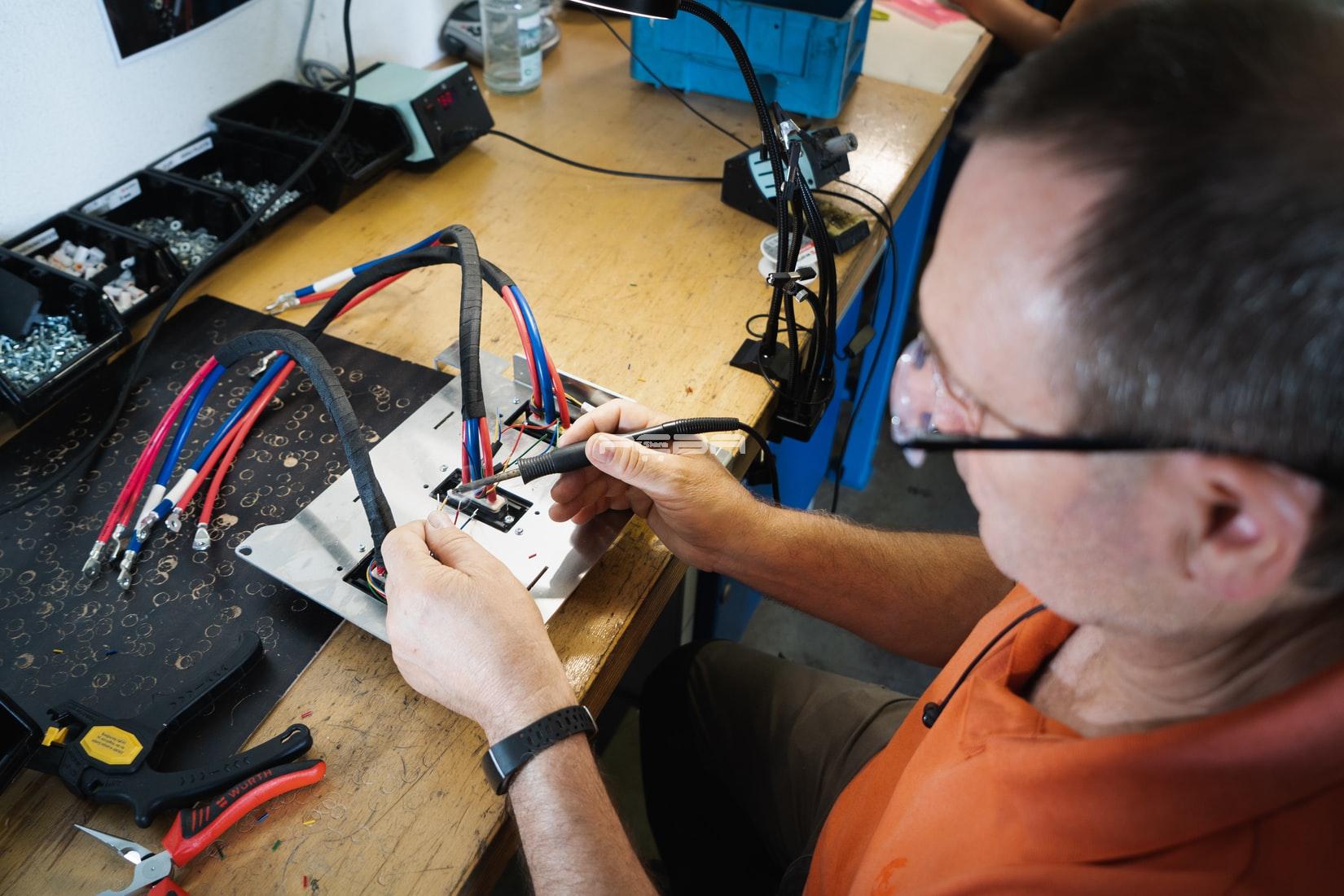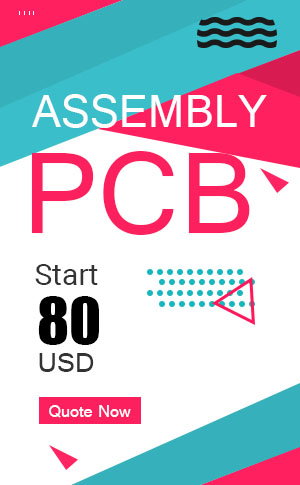General, quoting & support.
Add: Building E, No.58, Nanchang Road, Xixiang , Baoan District Shenzhen City, Guangdong, China
Tel : 0755-27348887
Fax : 0755-27349876
E-mail : svc@pcbastore.com
Selective Soldering vs Wave Soldering
Simon / 2021-02-24
Contents [hide]
In PCB assembly, there are two types of soldering that you have to come across. They are selective soldering and wave soldering. Both soldering processes are common, but they differ in significant ways. In fact, they have distinct advantages and disadvantages in their applications. Both types produce different results based on their applications. For example, when it comes to production volume, they have different production outcomes. It's important to understand more about the two soldering processes so that you know which one to use.

What Is Selective Soldering?
Selective soldering is the type of soldering that is used for PCB assembly that involves through-hole components. If you've noticed, double-sided PCBs are becoming a common thing nowadays. The reason for this is that their application allows for lighter products. It is because of this that selective soldering has become a common process in the PCB assembly world. It is vital to highlight that selective soldering happens to be automated. As a result, it is possible to set it according to the duration and temperature of the solder applied. This ensures that it produces the best possible results. There are three phases that are necessary in selective soldering. The processes are:
The application of flux to areas that require soldering
Preheating of the board
Use solder to solder particular components
Just like it is in other processes, there are situations that are the most ideal for the application of selective soldering instead of wave soldering. The first condition that necessitates the use of selective soldering is the height of the component. If the component is tall, the best soldering process to use is selective soldering. With the use of selective soldering in such a situation, it will be possible and effective to solder the board.
Again, if the spacing of components is tight, it will be best if you use selective soldering. There has to be adequate room for the soldering process to take place. So, in the case of tight spacing, the best way to go is selective soldering. Also, in situations where there is uneven heating, you should settle for selective soldering. In order for the solder to have an effective flow that forms a strong solder joint, it is advisable to opt for selective soldering. This is especially so when you're dealing with thick boards. It's also imperative to note that in a situation where you're dealing with a heavy pile of through-hole pins, this soldering process is the one that will help you to have an effective outcome. You have to ensure that you solder all the pins effectively, and this is possible if you use selective soldering.
Advantages of Selective Soldering
There are various advantages of selective soldering that are worth noting.
One of the major advantages of selective soldering is that the solder machines used are cheaper to run. This is because they don't require a lot of solder and flux to run. Therefore, in terms of lowering the overall cost, you can rely on selective soldering.
It gives you the ability to solder boards that can't be soldered using wave soldering. This is a great advantage because it gives you flexibility of producing effective results in your soldering process.
Selective soldering allows one to have set diverse parameters for every component as well as location. This is made possible by the fact that the size of nozzle can be adjusted. It is possible to set the diverse parameters in respect to the quantity of solder needed as well as contact time.
You don't have to use glue when soldering surface-mount components.
Selective soldering is consistent. With this soldering process, you are able to have repeated solder joint outcomes. This is good because you won't have variation of soldering outcomes. Simply put, it is a reliable type of soldering.
If you're dealing with areas that are difficult to reach, you can comfortably use selective soldering because it has the capacity to produce a quality outcome despite the challenge.
Selective soldering ensures that the level of cleanliness for a PCB board is high. In this type of soldering, you only apply flux on the areas that you need to solder. For this reason, you end up maintaining a high level of cleanliness for your PCB board.
Since selective minimizes the chances of thermal shock, the chances of defects or damages on the board reduce significantly.
Process of Selective Soldering
As mentioned earlier, the selective soldering process involves three stages. The first stage involves the application of flux to only the components that require soldering only. The second stage in the process is all about avoiding thermal shock. In order to realize this objective, you have to preheat the board before you begin the soldering. Take note that you should do the preheating slowly. The third stage in the process is the use of a bubble of solder to solder the components that require soldering.
What is Wave Soldering?
Another name for wave soldering is flow soldering. This is the process that has been in use for a long time to solder components to a circuit board. If you're using the wave soldering process, you have to use it in a protective gas environment. In the soldering, using nitrogen helps to minimize the chances of defects significantly. This is the preferred soldering type when doing production soldering. This is because it is easy to set it up and it can solder many boards within a short period of time. There are fundamental factors that PCB manufacturers have to consider when using wave soldering. The factors to consider include: board orientation, pad size, and the shape of the pad. It's important to take note that despite the good qualities of wave soldering, it has certain limitations that makes it difficult for particular boards to run through it. This is where selective soldering comes in.
Advantages of Wave Soldering
Wave soldering has advantages that are worth pointing out.
One of the advantages that you will find with wave soldering is that it is time consuming. Its ability to solder many boards within a short period of time makes it a preferable type of soldering when time is of essence. If you'll like to save time, the soldering process that's best to use is wave soldering.
There are fewer defects on circuit boards when using wave soldering. Since it uses nitrogen in its process, this reduces the chances of defects on the boards being soldered.
It is quite affordable. Since it does not have complicated technical applications like selective soldering, it is comes out as an affordable option.
If you're looking for a strong joint quality, this is a soldering process you can consider.
It has the capacity of soldering many PCBs at the same time. If you would like to have a high volume production, wave soldering is a viable option. Manufacturers prefer wave soldering when it comes to mass production because it ends up saving time and cost.
Process of Wave Soldering
The process involved in wave soldering consists of the following steps:
The first step has to do with the cleaning as well as preparation of components. For this purpose, a layer of flux is applied on the components.
The second step involves preheating the board. This is vital in activating the flux as well as preventing the board from cases of thermal shock.
The third step is ensuring that you pass molten solder over the PCB.
Conclusion
It is evident that wave soldering and selective soldering are important processes that are common in the PCB world. They are both useful in different situations and contexts, depending on the need. That is why manufacturers use both of them. For example, if they want to use technical applications, the soldering type to use is selective. On the other hand, if a manufacturer wants to a high production volume, the, the best one to use is wave soldering. In other words, both methods have advantages and disadvantages. Depending on the type of application that one wants and the expected results, it is possible to use either of the two.
The most important thing is to have a good understanding of both the wave and selective soldering processes. This is significant in allowing one to get the best possible results. For example, it is imperative to take note that wave soldering happens to be more complicated as a result of the internal environment. The internal environment is less stable. If there happens to be temperature variations, it is highly likely that PCBs can get destroyed during the PCB manufacturing process. In regards to selective soldering, you have to design a unique program for every circuit board you are dealing with. This ends up consuming a lot of time, which limits the capacity to have mass production. In essence, once you understand the various applications, the advantages, and the disadvantages of each type of soldering, you are better positioned to know the best one to use in a given situation.
Previous article:What Is PCB Surface Mount Technology (SMT)







